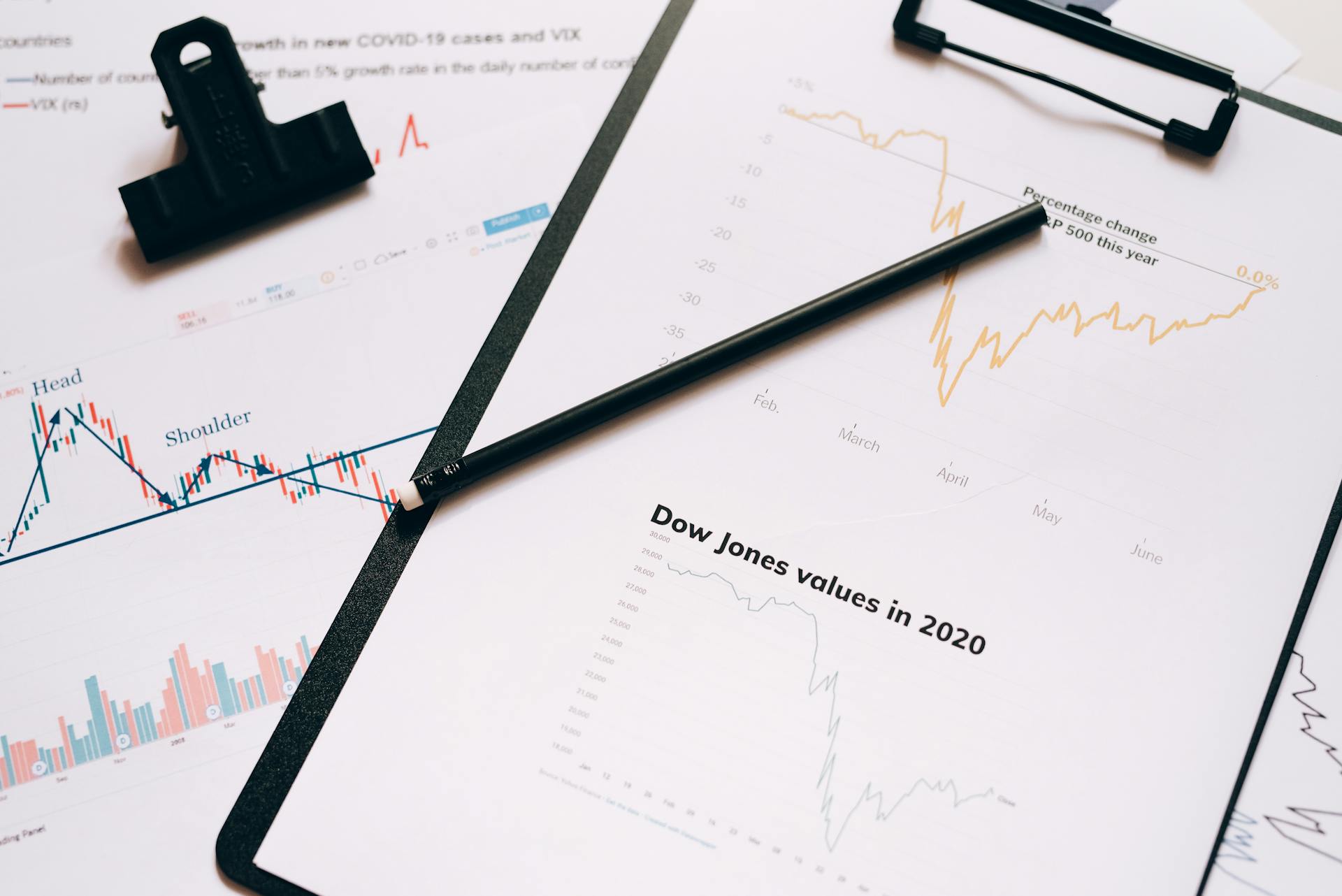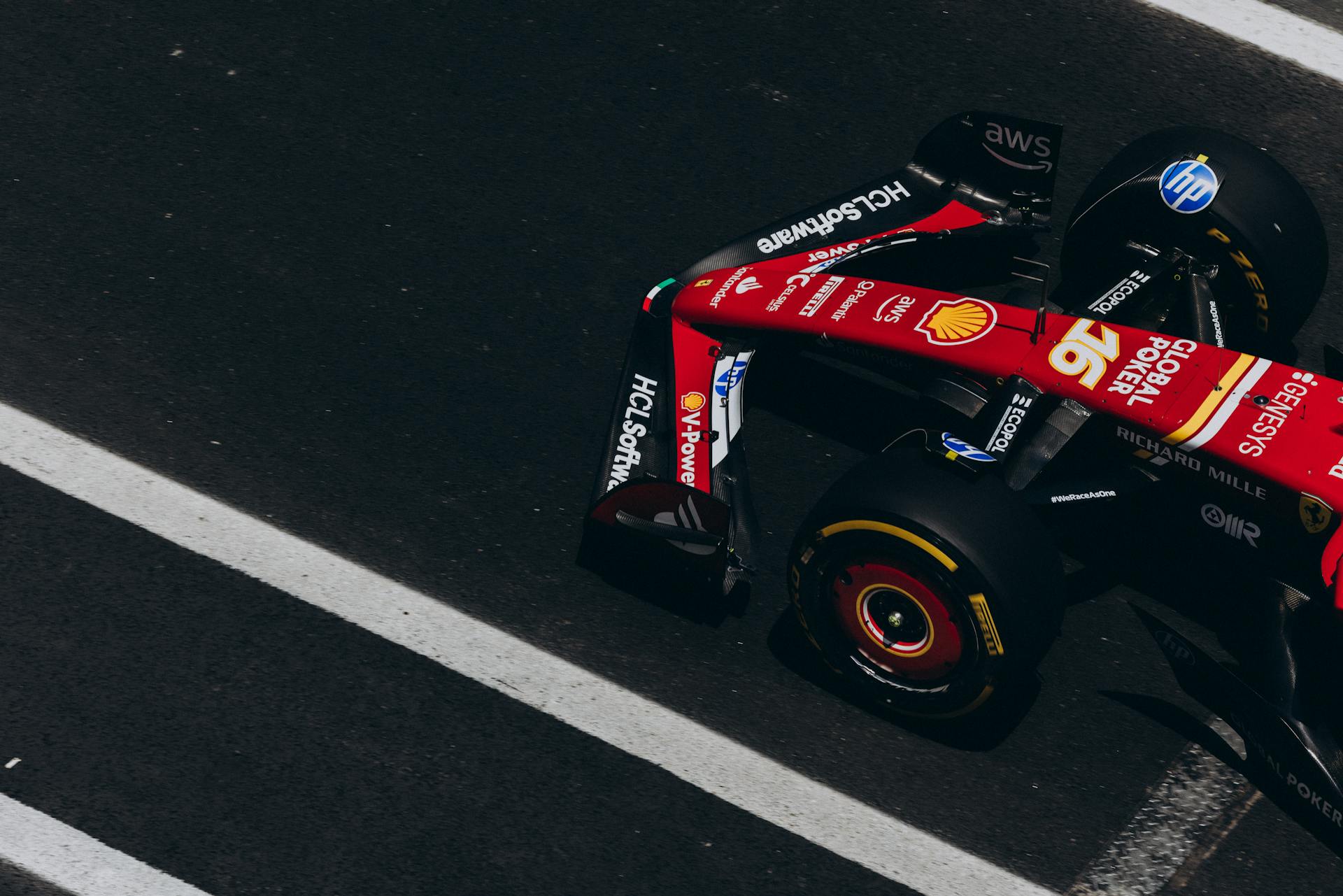
The required return from the SML, also known as the SML return, is a crucial concept in finance.
It's the minimum return that investors expect from a security, and it's based on the risk-free rate and the market risk premium.
The SML return is not the same as the expected return, which is the return an investor actually expects to earn.
In other words, the SML return is a benchmark that investors use to determine if a security is undervalued or overvalued.
What Is CAPM?
CAPM is a formula used to calculate the expected return on an investment. It's a fundamental concept in finance that helps investors understand the relationship between risk and return.
The CAPM formula is expressed as: E(Ri) = Rf + βi × (E(Rm) – Rf), where each variable represents a specific component of the formula.
E(Ri) is the expected return on the asset or investment, while Rf is the risk-free rate of return, typically the return on government bonds.
Intriguing read: Capm Required Return
βi (beta) is the measure of the asset's systematic risk relative to the market, and E(Rm) is the expected return on the market portfolio, comprising all risky assets in proportion to their market values.
In practice, CAPM is applied to public equities, with 'the market' being an all-market stock index like the FTSE All Share.
CAPM Components
The CAPM Components are the building blocks of the Capital Asset Pricing Model. The three main components are risk-free rate, beta, and market risk premium.
The risk-free rate is typically approximated using the yield on long-term government bonds, such as 10-year Treasury bonds in the United States or 10-year Gilts in the UK. These investments are not entirely risk-free, but they are uncorrelated to equity markets.
Beta can be estimated using historical data by regressing the returns of an asset against the returns of a broad market index. Alternatively, investors can use published beta estimates from financial data providers.
You might like: How Are Corporate Bonds Quoted
The market risk premium is often estimated using historical data by calculating the average excess return of the market over the risk-free rate. Investors can also use forward-looking estimates based on market expectations and economic forecasts.
Here are some common approaches to estimating these inputs:
- Risk-Free Rate (Rf): 10-year Treasury bonds in the US or 10-year Gilts in the UK
- Beta (β): Historical data regression or published estimates from financial data providers
- Market Risk Premium (E(Rm) – Rf): Historical data or forward-looking estimates
Estimating CAPM Inputs
Estimating CAPM inputs can be a daunting task, but it's essential to get it right. The risk-free rate is typically approximated using the yield on long-term government bonds, such as 10-year Treasury bonds in the United States, or 10-year Gilts in the UK.
Investors can estimate beta using historical data by regressing the returns of an asset against the returns of a broad market index. Alternatively, they can use published beta estimates from financial data providers.
The market risk premium is often estimated using historical data by calculating the average excess return of the market over the risk-free rate. Investors can also use forward-looking estimates based on market expectations and economic forecasts.
For another approach, see: Right of Use Asset Tax Treatment
To ensure accuracy, investors should regularly review and update their estimates. This involves re-estimating the risk-free rate, beta, and market risk premium over time.
Here are some common approaches to estimating CAPM inputs:
Line Formula
The Security Market Line (SML) formula is a crucial component in determining the required return from an investment. It's calculated using three key components: the risk-free rate (rf), beta (β), and the equity risk premium (ERP).
The risk-free rate (rf) is the yield received on risk-free securities, which is most often the 10-year treasury bond issued by the government for companies based in the U.S. This rate is a fundamental component of the SML formula.
Beta (β) measures the non-diversifiable risk resulting from market volatility (i.e. the systematic risk) of a security relative to the broader market (S&P 500). A higher beta indicates a greater level of systematic risk.
The equity risk premium (ERP) is the difference between the expected market return (S&P 500) and the risk-free rate. It's often used interchangeably with the term "market risk premium" and is calculated by subtracting the risk-free rate (rf) from the market return.
Consider reading: 500 Uae Dirham
Here's a breakdown of the SML formula components:
The SML formula calculates the implied expected return on an investment by adding the risk-free rate (rf) to the product of the security's beta and the equity risk premium (ERP).
Worth a look: Risk Inclination Formula
Key Differences and Takeaways
One key takeaway from the SML formula is that it's a crucial tool for investors to determine the required return on their investments.
The SML formula is based on the CAPM, which states that the required return is equal to the risk-free rate plus a risk premium.
The risk-free rate is a benchmark rate that represents the return of a risk-free investment, such as a U.S. Treasury bond.
A fresh viewpoint: Is Gofundme Free
Line vs. Line: Key Differences
The key differences between the Security Market Line (SML) and the Capital Market Line (CML) lie in their focus and risk measurement.
The SML is concerned with the risk-return trade-off for individual securities, while the CML looks at the same trade-off for a portfolio of securities.

The SML uses beta as its risk measure, whereas the CML uses the standard deviation of portfolio returns.
Here's a quick comparison of the two lines:
In summary, the SML and CML are two distinct concepts that help investors understand the relationship between risk and return.
Suggestion: Where Is Ads B Out Required?
Key Takeaways
The CAPM equation is E(Ri) = Rf + βi × (E(Rm) – Rf), where E(Ri) is the expected return, Rf is the risk-free rate, βi is the asset's beta, and E(Rm) – Rf is the market risk premium.
This equation is a key part of the CAPM theory, which suggests that investors should be compensated with higher expected returns for taking on additional risk. The formula itself is a mathematical representation of this idea.
Beta measures the volatility of an asset's returns relative to the overall market. It quantifies the asset's systematic risk that cannot be diversified away.
The Security Market Line (SML) is a graphical representation of the CAPM equation, plotting the expected return on the y-axis and the asset's beta on the x-axis. Assets above the SML are undervalued, and those below are overvalued.
Here are some key applications of the CAPM:
- Asset valuation
- Portfolio optimization
- Determining the cost of equity capital
- Evaluating investment performance
However, the CAPM has its limitations. It assumes efficient markets, rational investors, a single-period model, and the ability to hold a well-diversified portfolio.
Frequently Asked Questions
What is the slope of the SML formula?
The slope of the SML formula is the reward-to-risk ratio, calculated as (expected market return - risk-free rate) divided by beta. This ratio represents the expected return per unit of risk for a stock.
Sources
- https://www.wallstreetprep.com/knowledge/expected-return/
- https://www.capitalcitytraining.com/knowledge/capital-asset-pricing-model-capm/
- https://www.studocu.com/en-us/messages/question/4895569/the-formula-for-the-required-return-from-the-sml-is-multiple-choice-question-r-e-r-f-b
- https://www.wallstreetprep.com/knowledge/security-market-line-sml/
- https://www.initialreturn.com/security-market-line
Featured Images: pexels.com


